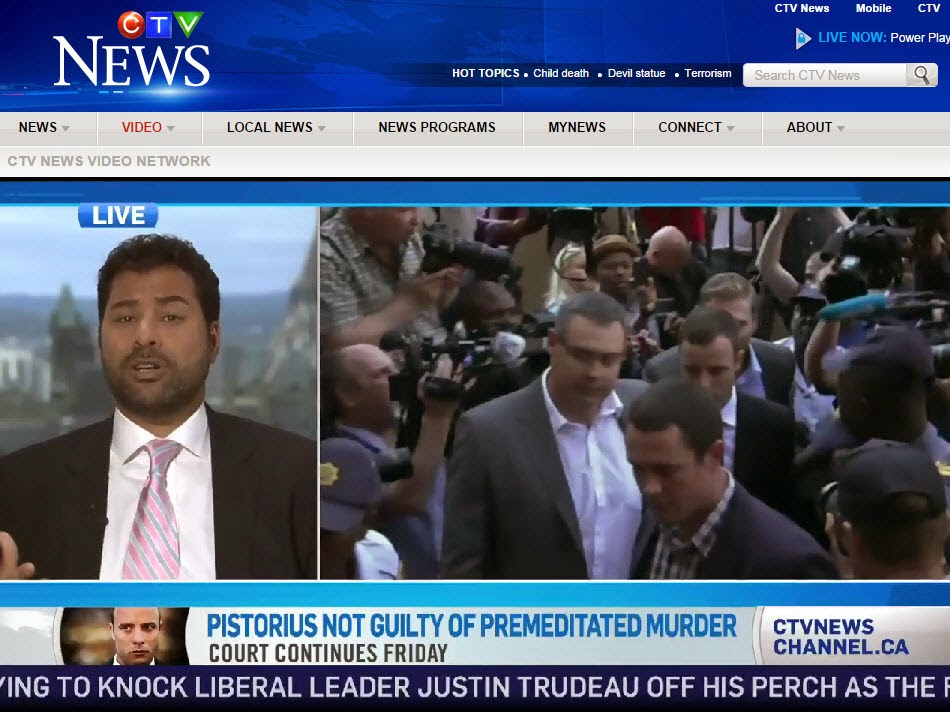With 2.1 seconds left in the game Montreal Canadiens forward Brendan Gallagher scored the game winner against the Ottawa Senators. Only he didn't. Toronto disallowed it after review.
With less than 10 seconds left in the game, Gallagher cut through the crease and clipped the back of Senators goalie Matt Murray's leg. Both players went down, but then popped back up. Gallagher then deflected the winner off Ben Chiarot shot under the bar. Alas, the goal was fake news.
Watch it here: https://twitter.com/BradyTrett/status/1364405906788638722
Should the goal have been disallowed?
Gallagher did indeed make contact with Murray spinning him around.
The short answer: it was a good goal. A
beautiful goal actually.
The analysis turns on Rule
69 of the NHL Rules, which provides as follows:
Rule 69 – Interference on the Goalkeeper
69.1 Interference on the Goalkeeper -
This rule is based on the premise that an attacking player’s position, whether
inside or outside the crease, should not, by itself, determine whether a goal
should be allowed or disallowed. In other words, goals scored while attacking players
are standing in the crease may, in appropriate circumstances be allowed. Goals
should be disallowed only if: (1) an attacking player, either by his
positioning or by contact, impairs the goalkeeper’s ability to move freely
within his crease or defend his goal; or (2) an attacking player initiates
intentional or deliberate contact with a goalkeeper, inside or outside of his
goal crease. Incidental contact with a goalkeeper will be permitted, and
resulting goals allowed, when such contact is initiated outside of the goal
crease, provided the attacking player has made a reasonable effort to avoid
such contact.
…The overriding rationale of this rule is
that a goalkeeper should have the ability to move freely within his goal crease
without being hindered by the actions of an attacking player. If an attacking
player enters the goal crease and, by his actions, impairs the goalkeeper’s ability
to defend his goal, and a goal is scored, the goal will be disallowed.
A few of points:
1) The opening to the Rule clearly
indicates that contact with a goalie in the crease does not automatically result
in a disallowed goal. That’s right – the NHL gets that every situation is
different and should be evaluated on a case by case basis.
2) The Rule outlines the rationale
for the Rule, namely, a goalie “should have the ability to move freely
within his goal crease without being hindered by the actions of an attacking
player”.
3) The specific part of the Rule that
applies to Gallagher’s fake goal is this part: “Goals should be disallowed only if…
an attacking player…impairs the goalkeeper’s ability to move freely within his
crease or defend his goal”.
Analysis
Did Gallagher make contact with Murray?
Yes.
By clipping Murray, did Gallagher spin
Murray around?
Yes.
Does that mean the goal should have been
disallowed?
No. And it’s not close.
Why? When Rule 69.1 is read as a whole, the takeaway is clear: a goal will be disallowed if a goalie’s ability to defend his net was compromised or impaired. And that’s why everyone is assessing whether Murray was set or had the time to get set. If the answer to either question is yes, then his inability to defend his net was cured and he could once again defend his net.
Four seconds.
Four seconds.
Four seconds.
That’s right – four seconds.
That’s how much time passed between
Gallagher clipping Murray and Gallagher tipping the puck in. Gallagher hit
Murray at 7.1. second and the goal went in at the 3 second mark.
Indeed, between clipping Murray and
scoring, Gallagher was flattened by Nikita Zaitsev, got up and scored.
Murray had time. He had enough time to
reset.
There was no conclusive evidence that
warranted disallowing the goal. You need more than that as per Rule 69 and the conclusive evidence bar.
And it just wasn’t there.
So I am overturning the overturned goal.
Your Friend,
Eric





























